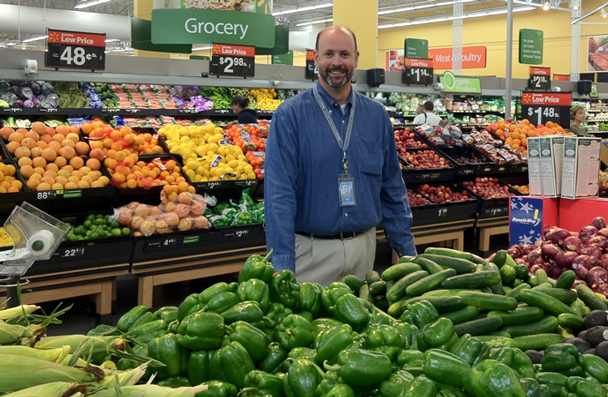Walmart, the world's largest company by revenue, according to the 2011 Fortune 500 list, would also like to be the world's greenest corporation. Since Sam Walton founded the first Walmart in Rogers, Arkansas, 50 years ago, the company has grown to 10,185 stores and club locations in 27 countries, serving 200 million customers a year. With a global footprint on this scale, positive change at Walmart could be pivotal, and the company's efforts—though not immune to criticism—have earned awards from organizations such as the EPA, American Council for an Energy-Efficient Economy, and World Environment Center. Kory Lundberg, Walmart's sustainability director, makes the case that pleasing customers, keeping costs low, and focusing on maintaining a sustainable company all go hand in hand.
Gourmet Live: In the past, Walmart has been criticized for being environmentally destructive, including wasting natural resources on a far-flung supply chain and building massive stores. Were such criticisms the impetus for the sustainability project?
Kory Lundberg: Not really. Sustainability is something we've focused on for a long time. It's always been a part of who we are. But I'd say that it was really Hurricane Katrina [in August 2005] that changed the company. Lee Scott, who at the time was the CEO of Walmart, really wanted the company to assist in helping those affected by this natural disaster. We saw how the company responded to that, and wanted to know how the company could be like that—at its best—all the time, and sustainability was a large part of the answer. If we look at the environment as Katrina in slow motion, we see how important it is to work toward making changes that help the environment and keep our customers happy.
GL: How long did it take for the company to implement its sustainability program?
KL: It was a process that took more than a year. With a company the size of Walmart, you want people to really believe in the idea. Lee Scott really became the champion for sustainability in the business.
GL: Why is environmental stewardship important to the corporate ethos?
KL: It fits very well with Walmart's culture. We have always been focused on eliminating waste and reducing costs for our customers. Sustainability is also a really great business strategy. If we use less energy, our costs go down. The money we save from cutting back is money that we pass through to the customers in the form of low prices.
GL: What are some specific ways you are working to reduce waste and the company's carbon footprint, and what are the results?
KL: In 2005, one of our initial goals was to reduce carbon emissions by 20 percent by the end of 2012 in our 2005 baseline of global stores. So far we have reduced emissions by 12.74 percent. We also have a goal to double the efficiency of our U.S. trucking fleet. Since 2005, we have increased efficiency by 69 percent. Because of this progress, since 2007 we have been able to deliver 360 million more cases of product while driving 270 million fewer miles.
We also implemented the use of LED lighting. At first, we tested LED lights in our freezer cases. They use a lot less energy than fluorescent bulbs, last significantly longer (50,000 hours), and work better in the cold. Since 2005, LED lighting has become standard [in freezers] in all our stores around the world.
More recently, LED lights became part of our prototype for parking lots. We started in Central America and Puerto Rico, and we gradually began implementing them in the U.S. and China. Last fall, we opened a store in Wichita, Kansas, where we used them for the sales floor lighting. The potential and possibilities for these lights are great.
In 2011, we reduced waste to landfills by 80 percent in the U.S. To give you an understanding of what that means, that amount of landfill waste has the potential of producing nearly 12 million metric tons of carbon dioxide. Not only that, but this change alone reduces a lot of cost: We were able to return $231 million to the business in 2011, which is the equivalent of the profit of 30 to 40 supercenters.



 Pinterest
Pinterest


